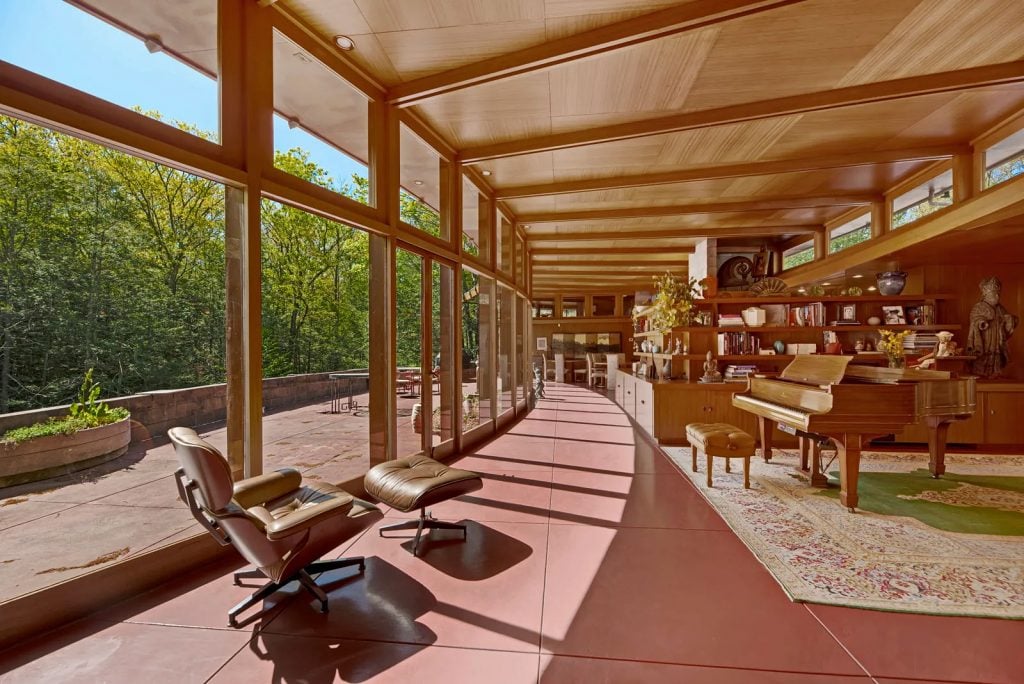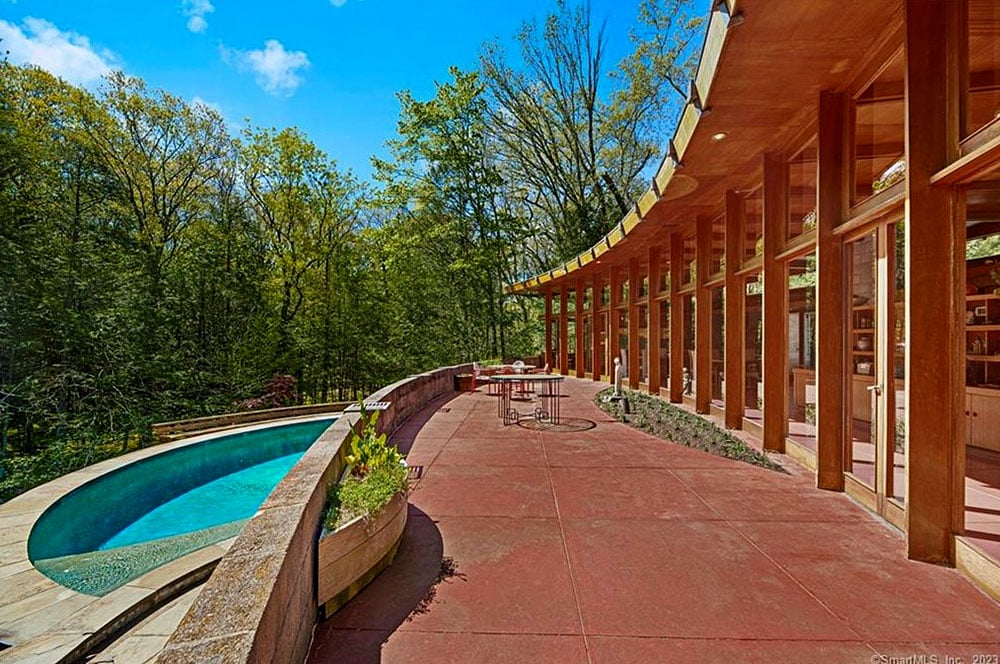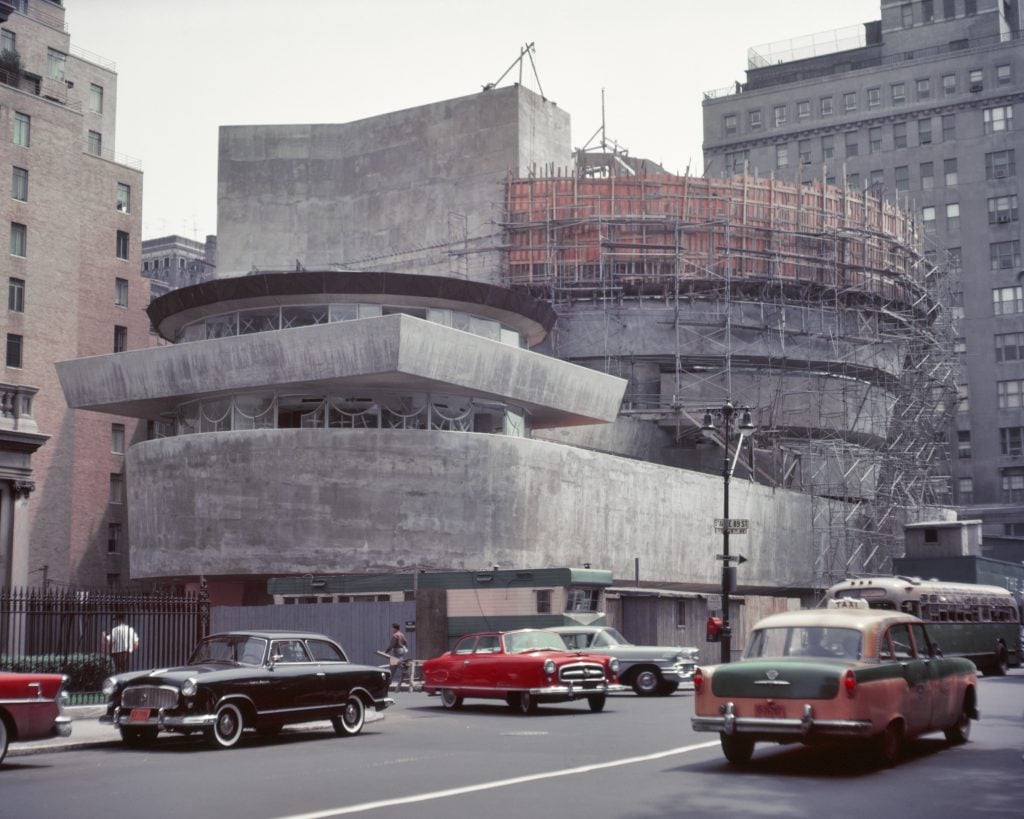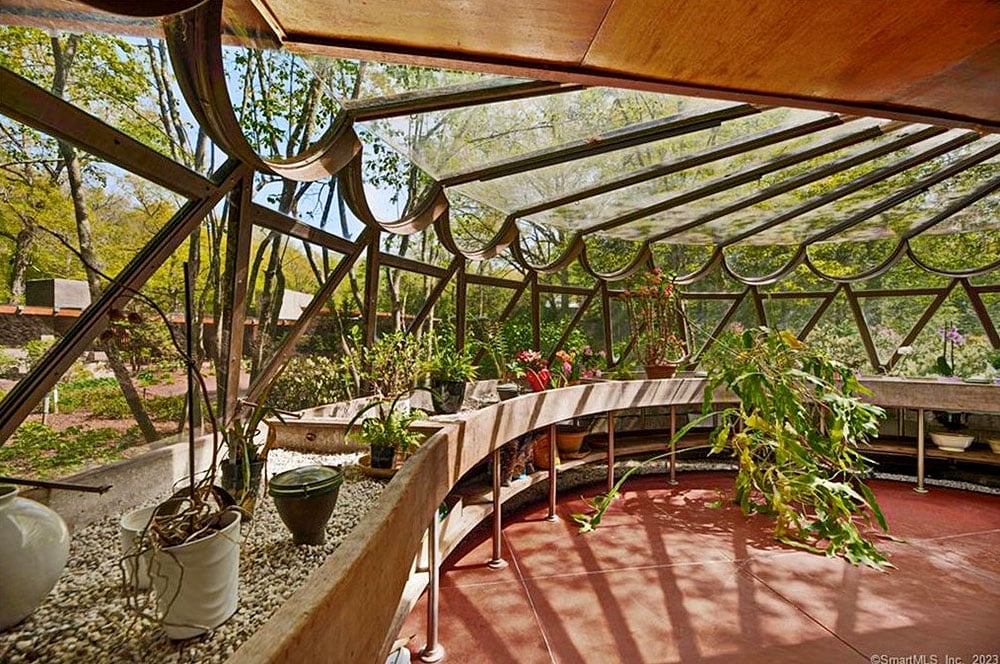Art World
One of Frank Lloyd Wright’s Final Projects, Modeled After His Guggenheim Design, Sells for $6 Million
The architect briefly stayed in the Connecticut home while overseeing the construction of the museum.

A Frank Lloyd Wright-designed home in the town of New Canaan, Connecticut, has sold for $6 million—25 percent below its asking price—to an undisclosed buyer. Called Tirranna, the 7,000-square-foot estate, built in 1955, is one of the famed architect’s largest residential projects, and one of his last.
Most recently selling for $4.8 million in 2018, Tirranna is among the higher-priced Frank Lloyd Wright properties on record, as well as one of the most expensive properties sold in New Canaan in the last year. It is one of a handful of Wright properties to enter the market recently, which also includes the Mrs. Clinton Walker House in California, his only oceanfront home.

Interior view of Tirranna, featuring Philippine mahogany paneling and Cherokee-red flooring. Photo: Udor Photography. Courtesy of Coldwell Banker Global Luxury.
Tirranna was listed by Coldwell Banker Global Luxury’s Albert Safdie and Marsha Charles, who closed on the property January 22. “It was a rare honor to represent Tirranna,” they said, “a true gem of mid-century architectural history that will continue to provide a Zen-like experience blending nature and comfort to its latest inhabitants.”
Though small in size, the idyllic town of New Canaan became a hotbed of architectural experimentation in the 20th century. It’s estimated that, between 1948 and 1973, upwards of 100 Modernist homes were built in the area by architectural greats who included Marcel Breuer (creator of the Whitney Museum of American Art on the Upper East Side), John M. Johansen, and Eliot Noyes. They were part of the Harvard Five, a group of architects who settled in New Canaan in the 1940s after graduating from the university’s design department. Philip Johnson’s famed Glass House, too, calls New Canaan home. Like Wright, they all emphasized simplicity, functionality, and honesty of materials.
Tirranna gets its name from an Australian Aboriginal word meaning “running waters,” referring to a nearby stream and recalling the architect’s most iconic residential project, Fallingwater in Pennsylvania. The classic Usonian abode features seven bedrooms, eight and a half bathrooms, and a wine cellar converted from a bomb shelter. Tirranna’s interior features Philippine mahogany paneling, Cherokee-red Colorundum concrete flooring, and a clerestory for an abundance of natural light. The architect also provided large windows that look out onto nature. In 1958, an observatory was added above the master bedroom.

Exterior curved patio and circular pool. Photo: Udor Photography. Courtesy of Coldwell Banker Global Luxury.
The land immediately surrounding the home was transformed into gardens by horticulturist Frank Okamura and landscape architect Charles Middeleer. Okamura is credited with reviving the bonsai tradition in America through his decades-long work at the Brooklyn Botanic Garden and his book The Art of Bonsai. A greenhouse, circular pool, tennis court, barn, playhouse, and a one-room guesthouse can also be found on the grounds.
Wright himself briefly stayed in the home while overseeing the construction of the Solomon R. Guggenheim Museum some 40 miles away in Manhattan. With its semicircular style, Tirranna mirrors the spiral concrete ramp that makes the Guggenheim one of the most recognizable pieces of architecture in the city. The greenhouse of Tirranna was even built using scalloped-glass windows left over from the Guggenheim project.

The Solomon R. Guggenheim Museum, New York, under construction (ca. 1950s). Photo: Charles Phelps Cushing/ClassicStock/Getty Images.

The circular windows used in Tirranna’s greenhouse were left over from the Guggenheim project. Photo: Udor Photography. Courtesy of Coldwell Banker Global Luxury.





